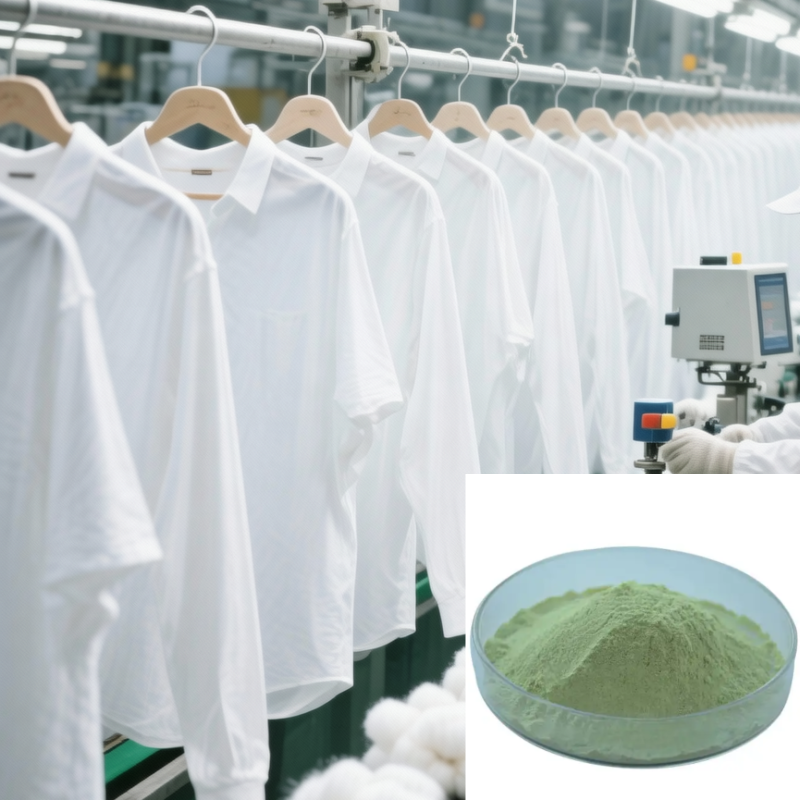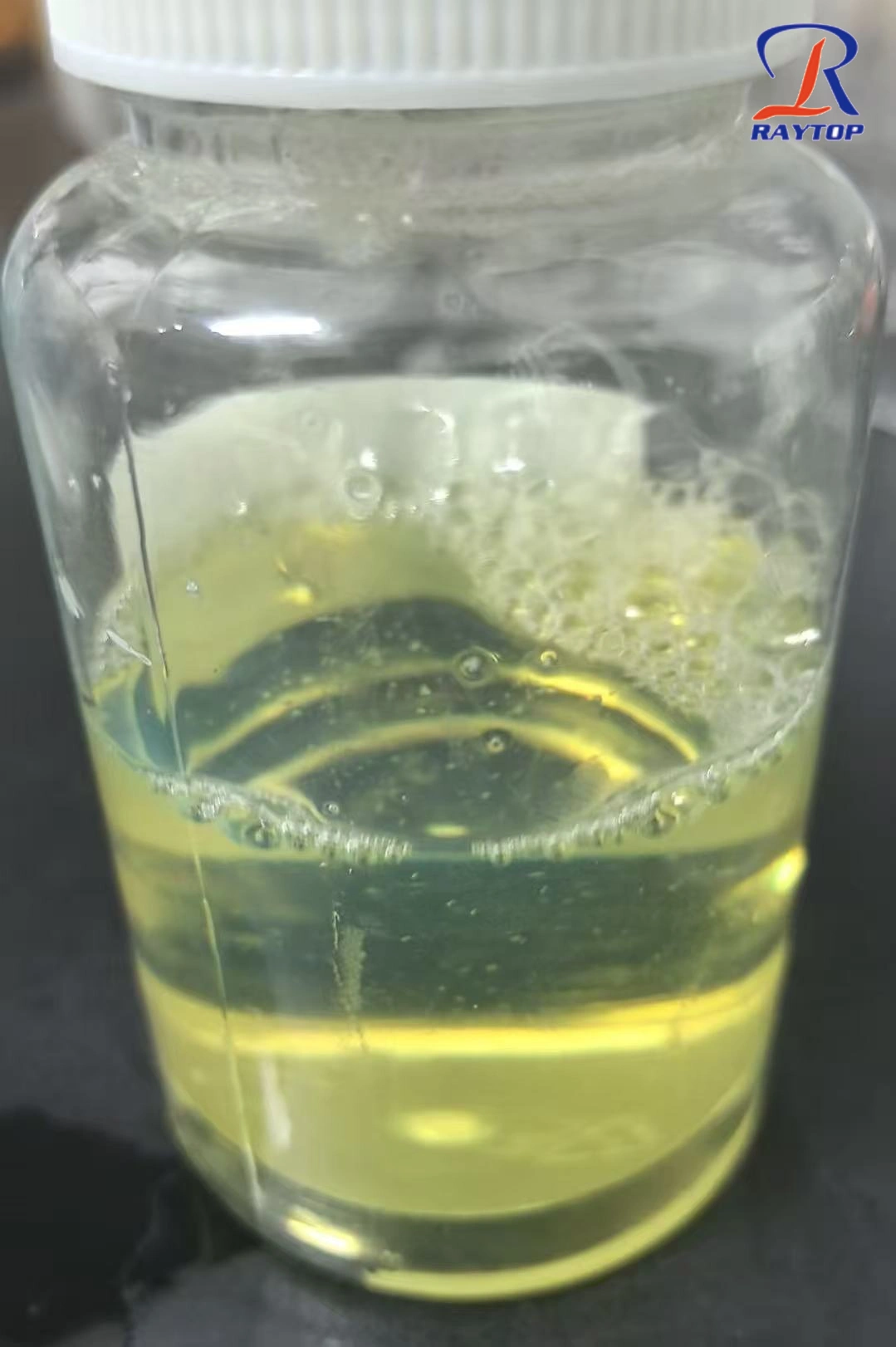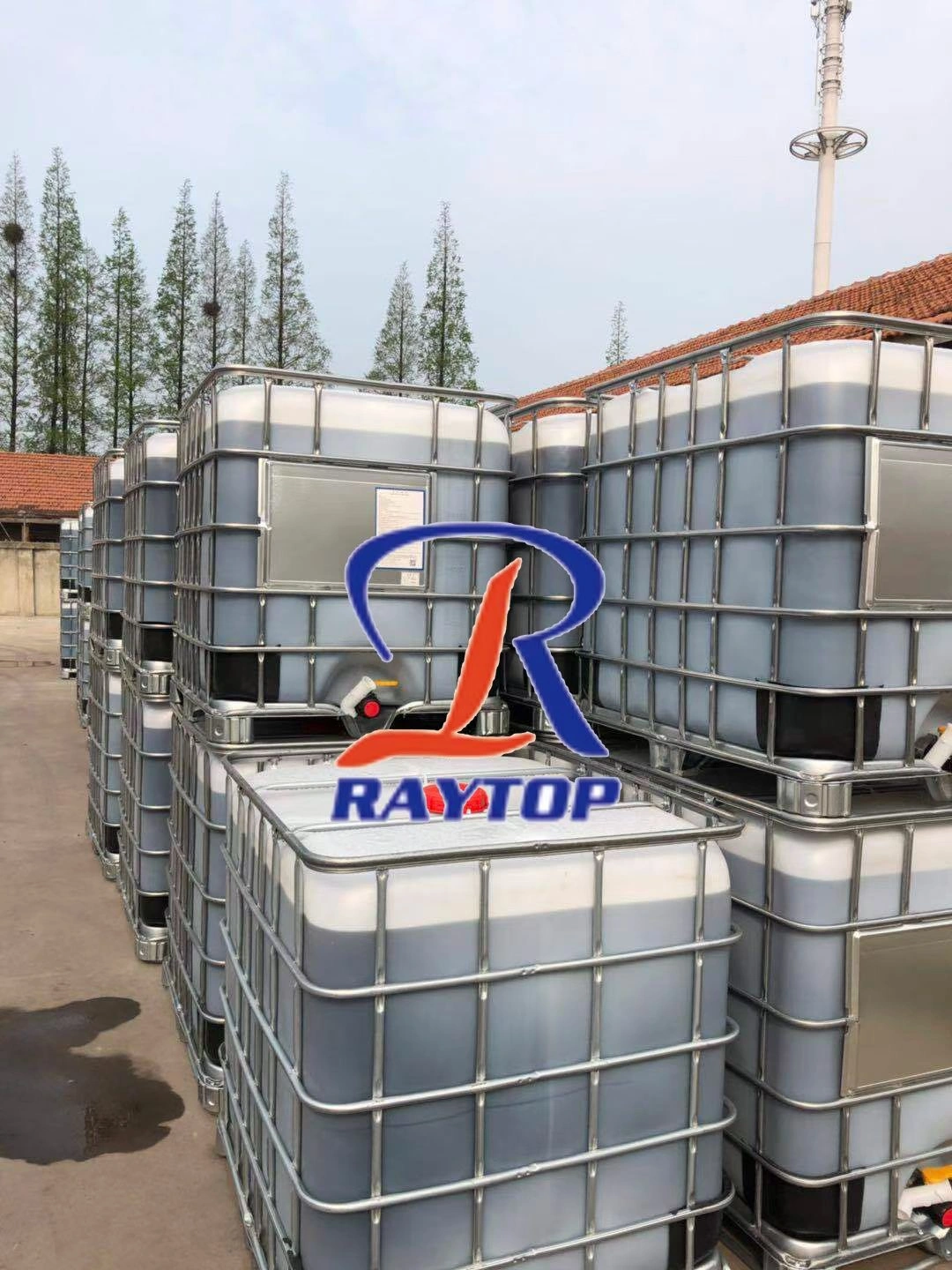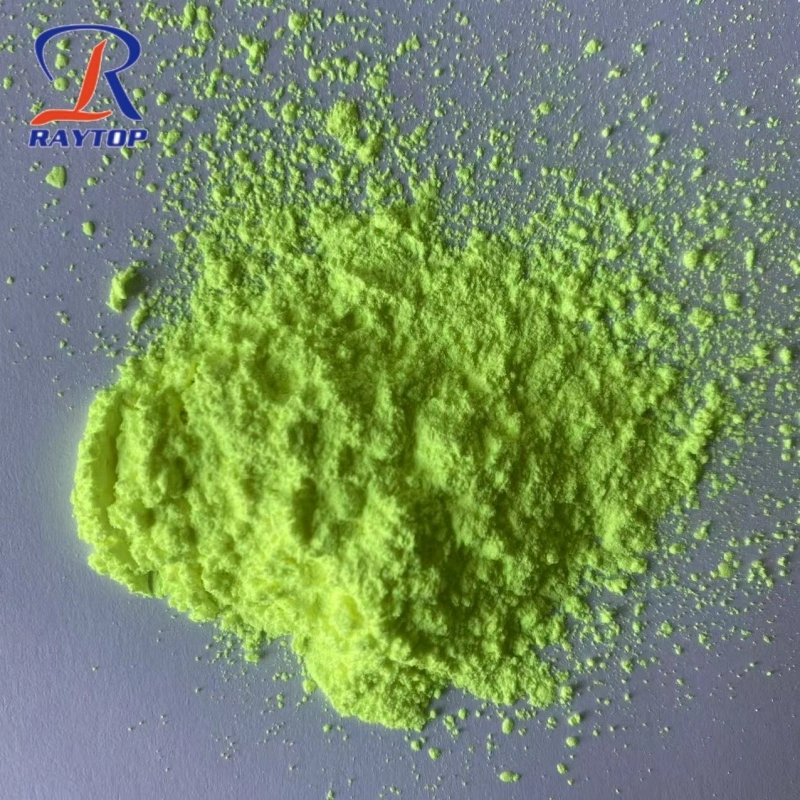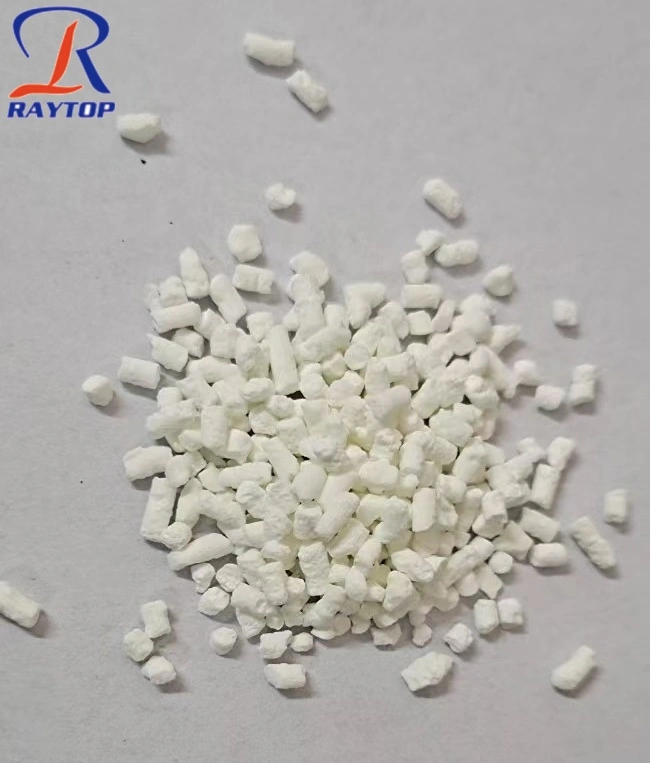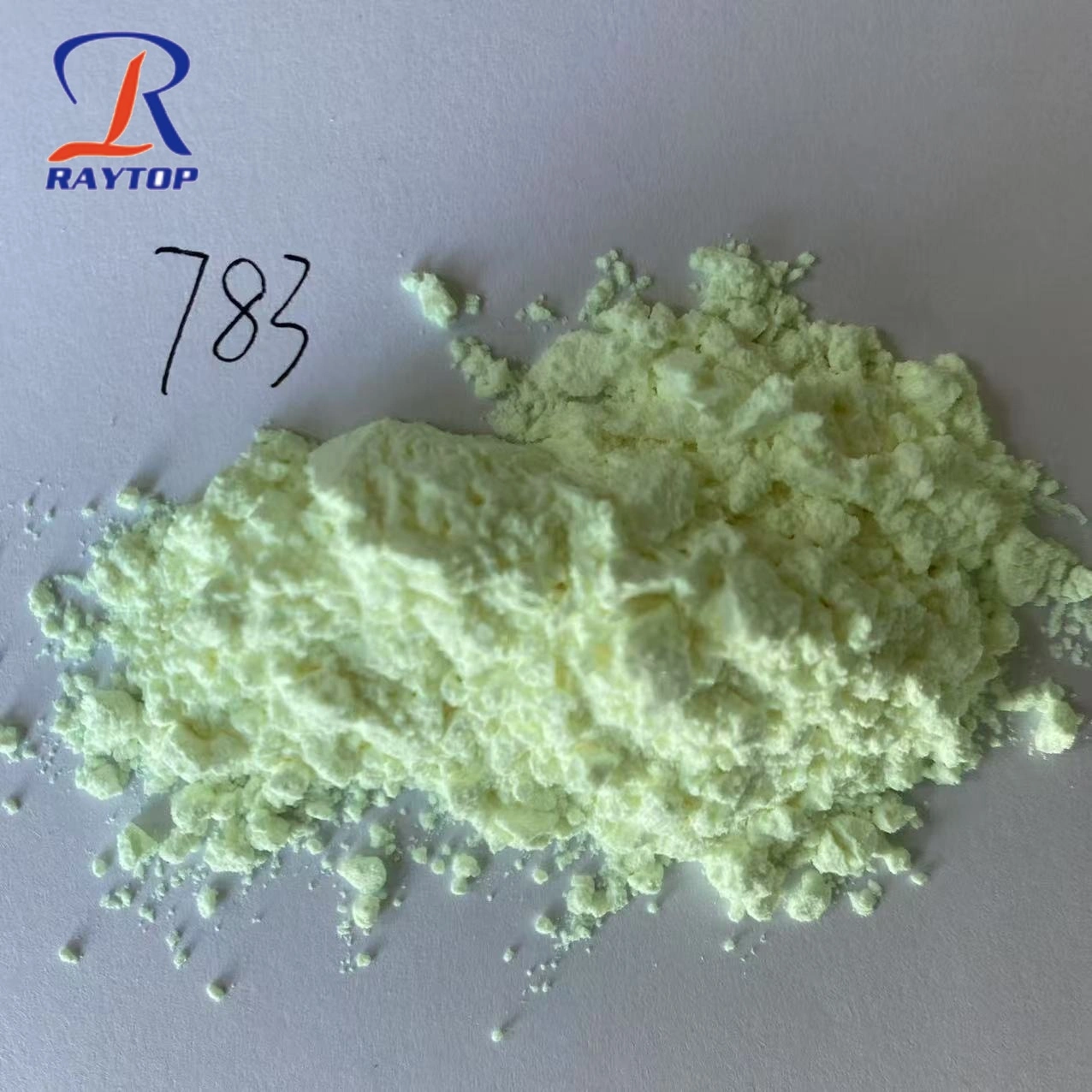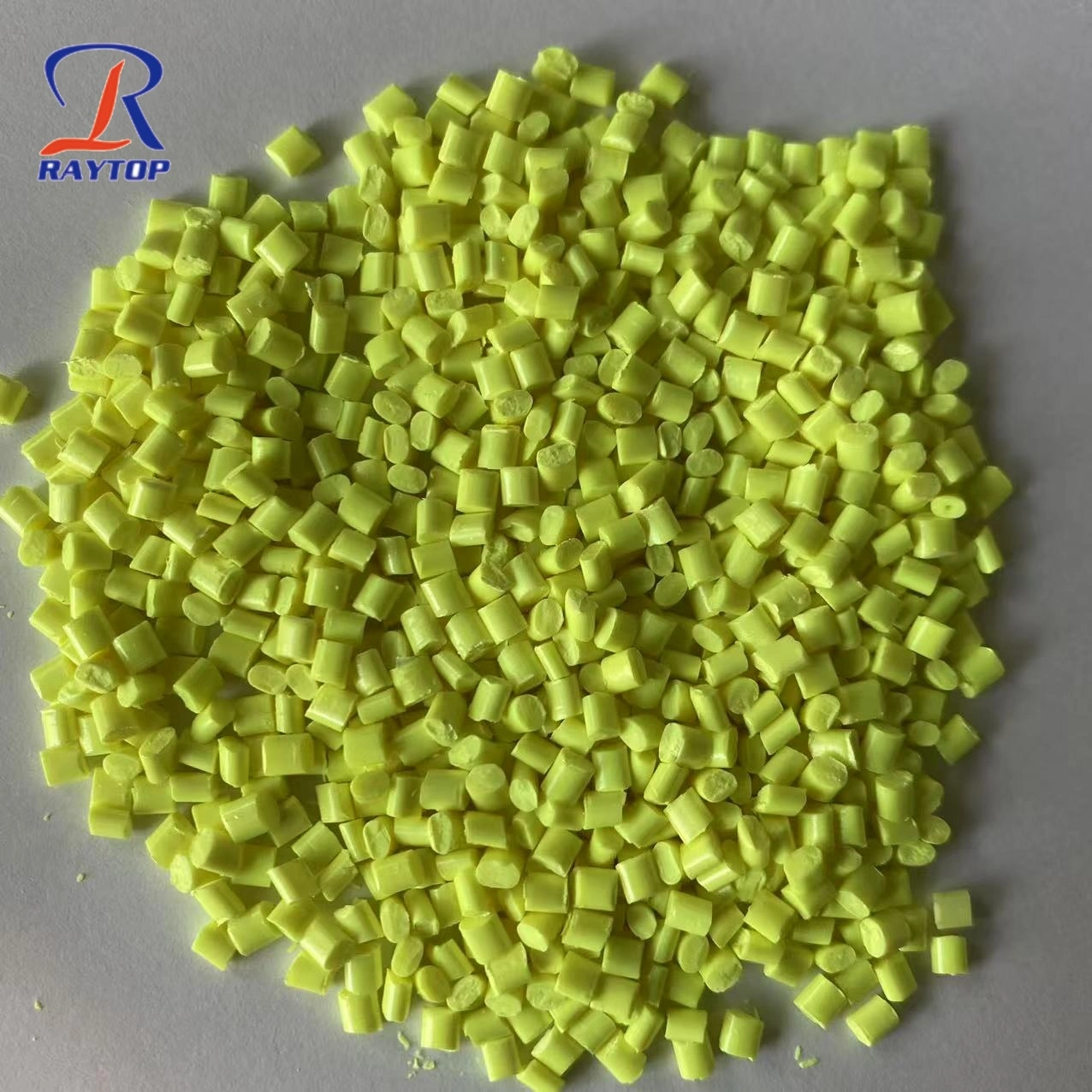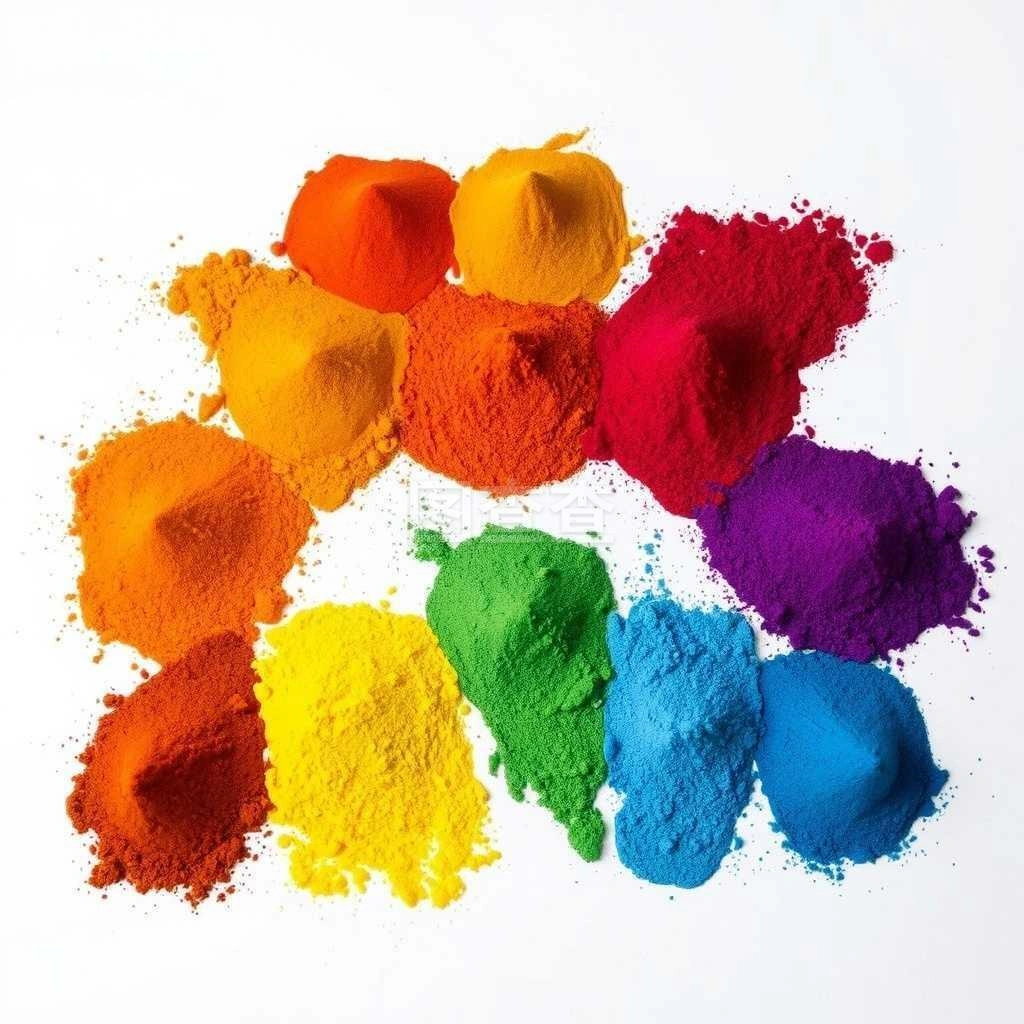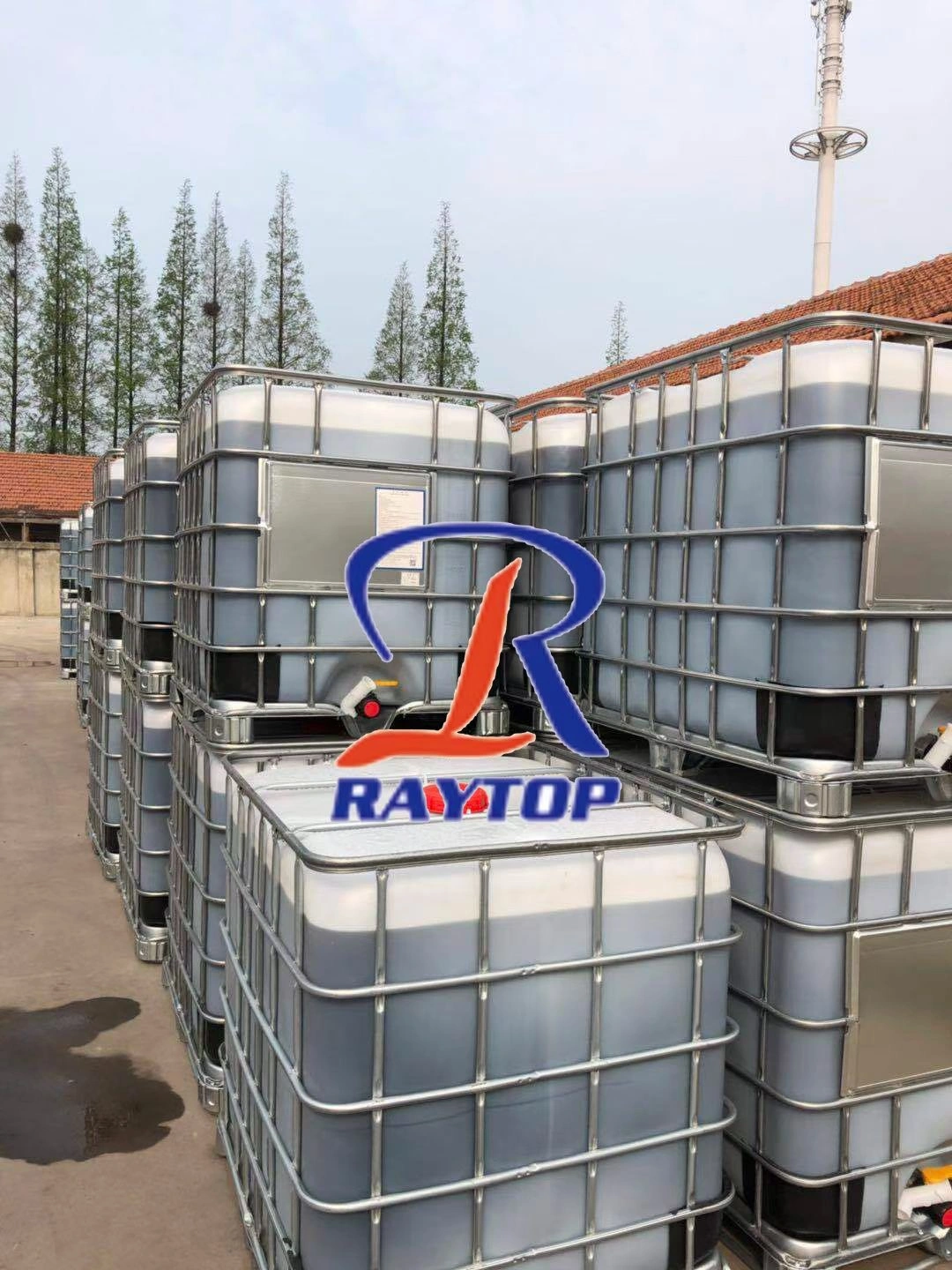Introduction: Why Whiteness Matters in Cotton Textiles
In the textile industry, whiteness is not just a color—it’s a standard of purity, hygiene, and quality. Consumers associate bright white cotton with cleanliness and premium fabric care. For textile manufacturers, achieving consistent whiteness in large-scale production is both a challenge and a competitive necessity.
However, during cotton fabric production and storage, natural cellulose tends to yellow due to impurities, heat, light exposure, and oxidation. Traditional bleaching processes can remove some discoloration, but they often damage fibers, reduce brightness, or fail to achieve uniform whiteness. To learn how to choose optical brighteners, please check out this article.
To address these challenges, modern textile science relies on optical brighteners—specialized fluorescent whitening agents (FWAs) that enhance brightness by converting invisible ultraviolet (UV) light into visible blue light. Among these innovations, Shandong Raytop Chemical Co., Ltd. has emerged as a global leader, offering cutting-edge whitening solutions for mass cotton production. Their Fluorescent Whitening Agent 4BK stands out as a breakthrough for achieving stable, vivid whiteness under various conditions.
The Science Behind Cotton Whitening
Cotton is primarily composed of cellulose, a natural polymer with hydroxyl groups that easily absorb environmental impurities. This structural property makes cotton susceptible to yellowing over time, especially under heat, light, and alkaline washing conditions.
Traditional Bleaching vs. Optical Brightening
Traditional whitening relies on oxidative bleaching using hydrogen peroxide or sodium hypochlorite. While effective in removing organic pigments, these methods often weaken cotton fibers and consume significant energy. Optical brighteners, in contrast, do not remove pigments but instead mask yellow tones by enhancing blue fluorescence—making fabrics appear whiter and brighter.
Table 1. Comparison Between Traditional Bleaching and Optical Brightening
| Parameter | Bleaching | Optical Brightener (FWA) |
|---|---|---|
| Whitening Mechanism | Chemical oxidation of pigments | Fluorescent light emission |
| Whiteness Retention | Moderate | High |
| Fiber Damage | Possible | Minimal |
| Energy Consumption | High | Low |
| Environmental Impact | Higher | Lower |
Optical brighteners work through fluorescence—they absorb ultraviolet light (340–370 nm) and re-emit it as visible blue light (420–470 nm), compensating for yellowish hues in the fabric. This phenomenon significantly enhances perceived whiteness without damaging the cotton structure.
Global Market & Research Insights: Demand for Whiter Cotton
According to a 2024 study published in Textile Research Journal, consumer preference for higher whiteness index (WI) fabrics has risen by 23% over the last five years, especially in the apparel and home textile sectors. The global textile whitening agents market is expanding rapidly, driven by sustainability initiatives and the need for energy-efficient solutions.
Table 2. Global Market Data for Textile Whitening Agents
| Region | 2023 Market Value (USD Million) | Projected 2028 Value | CAGR (%) |
|---|---|---|---|
| Asia-Pacific | 520 | 780 | 8.4 |
| Europe | 340 | 440 | 5.3 |
| North America | 280 | 380 | 6.3 |
The growing use of optical brighteners in textile detergents, paper, and plastics further drives demand. However, the textile sector remains the leading consumer, accounting for nearly 45% of total global FWA usage.
As fabrics are increasingly subjected to strong alkaline detergents and high-temperature washing, only high-performance brighteners with superior stability—like Raytop’s 4BK—can meet industrial whitening standards.
Common Challenges in Whitening Cotton Fabrics
Mass whitening of cotton is a complex chemical process that faces several persistent challenges:
Yellowing and Reversion: Prolonged exposure to heat or UV radiation causes optical brighteners to degrade, reducing whiteness.
Poor Alkaline Stability: Many FWAs lose brightness in alkaline conditions (pH >10), typical of industrial washing.
Uneven Whiteness: Variations in fiber absorption lead to inconsistent results across fabric batches.
Chemical Incompatibility: Some brighteners react poorly with finishing agents, detergents, or softeners.
To overcome these limitations, manufacturers need advanced whitening agents with strong chemical stability, uniform fiber penetration, and high lightfastness. That’s where Shandong Raytop Chemical’s Fluorescent Whitening Agent 4BK provides a transformative solution.
Raytop’s Breakthrough: Fluorescent Whitening Agent 4BK
1. Innovation Rooted in Science and Experience
Founded in 2006 and headquartered in Jinan City, Shandong Raytop Chemical Co., Ltd. has become a benchmark in optical brightener manufacturing. With three production bases covering 120,000 square meters, six workshops, and over 260 employees, Raytop integrates research, production, and export of advanced whitening chemicals for textiles, plastics, coatings, inks, detergents, and papermaking.
Through years of R&D, Raytop’s technical team identified a key problem: traditional brightening agents perform poorly in strong alkaline environments used in textile processing. To solve this, the company developed a novel blue dye molecule incorporated into Fluorescent Whitening Agent 4BK, ensuring exceptional brightness and color stability even under challenging industrial conditions.
Application of Fluorescent Whitening Agent 4BK on Cotton
2. Technical Specifications
Table 3. Technical Data of Fluorescent Whitening Agent 4BK
| Property | Specification |
|---|---|
| Appearance | Yellow Green |
| Purity | 98.5% |
| Color Shade | Blue |
| Solubility | Water or Solvent |
| Shelf Life | 2 Years |
| CAS | 5089-22-5 |
| Package | 10kg/25kg per fiber drum |
| Transport | By sea or by air |
3. Performance Comparison: Raytop 4BK vs. KISCO Brightener
Independent testing conducted by Raytop’s analytical department using high-performance liquid chromatography (HPLC) and whiteness meters demonstrated superior results for 4BK compared to a leading international competitor, KISCO.
Table 4. Performance Comparison (Raytop 4BK vs. Leading Brand)
| Parameter | Raytop 4BK | KISCO Optical Brightener |
|---|---|---|
| Whiteness Index Increase (%) | 25% | 18% |
| Alkaline Stability | Excellent | Good |
| Fluorescent Brightness | Strong | Medium |
| Recommended Dosage | 0.05–0.1% | 0.08–0.12% |
| Cost Efficiency | High | Medium |
This performance edge is attributed to Raytop’s customized blue dye technology, which enhances interaction with cotton’s cellulose structure. As a result, the fluorescent effect is amplified, creating a visibly brighter, whiter finish with less chemical use.
Application Guide for Textile Manufacturers
Fluorescent Whitening Agent 4BK is engineered for mass-production compatibility, offering flexibility in both exhaust and continuous dyeing processes. The following operational parameters ensure optimal whitening and brightness:
Table 5. Recommended Usage Conditions for 4BK
| Parameter | Recommended Range |
|---|---|
| pH | 10–12 |
| Temperature | 80–100°C |
| Dosage | 0.05–0.1% owf |
| Treatment Time | 30–40 min |
| Compatible Chemicals | Bleaching agent, detergent, softener |
Application Tips
Ensure uniform dispersion of the whitening agent before processing.
Use soft water to prevent metal ion interference.
Apply at the final rinsing stage for maximum brightness retention.
Store product in a cool, dry place to maintain stability.
By following these steps, textile manufacturers can achieve consistent high-whiteness levels, reduced reprocessing costs, and improved final fabric quality.
Why Choose Shandong Raytop Chemical Co., Ltd.
1. Industry Leadership and Production Strength
Established in 2006, Shandong Raytop Chemical Co., Ltd. operates three production bases with modern infrastructure, advanced testing equipment, and over 260 skilled employees. The company maintains strict quality control using HPLC, automatic melting point analyzers, and whiteness meters—ensuring batch-to-batch consistency.
2. Research & Technical Excellence
Raytop’s R&D division specializes in fluorescent whitening agents and optical brightener raw materials. Their scientists have deep expertise in molecular modification and surface chemistry, allowing the company to design brighteners optimized for specific textile needs.
China Optical Brightener CLE for Nylon and Cotton
3. Global Reach and Customer Trust
Raytop’s products are exported worldwide—to Europe, North America, Southeast Asia, and Africa—serving both large industrial clients and specialized textile processors. Their products are renowned for:
High quality and stability
Low dosage, high whiteness performance
Fast delivery and technical support
Favorable prices and long-term service partnerships
Through ongoing innovation, Raytop continues to strengthen its reputation as a trusted global supplier of optical brighteners for diverse industries.
Future Trends: Sustainable Whitening Chemistry
As sustainability becomes a cornerstone of the textile sector, whitening chemistry is evolving toward greener, more efficient formulations. Raytop Chemical actively invests in research to reduce energy consumption, chemical load, and environmental impact in the whitening process.
Emerging trends include:
Development of biodegradable optical brighteners compatible with eco-label standards.
Enhanced FWAs with UV protection and long-lasting fluorescence.
Integration of smart optical technologies that maintain brightness over multiple washing cycles.
Raytop’s commitment to sustainable production and global environmental responsibility positions it as a forward-thinking leader in the textile chemicals industry.
Conclusion: The Brighter Future of Cotton Whitening
Whitening cotton clothes in mass production is both a science and an art—balancing chemistry, performance, and sustainability. While traditional bleaching methods remain foundational, they are no longer sufficient for modern textile demands. The next generation of optical brighteners, led by Shandong Raytop Chemical’s Fluorescent Whitening Agent 4BK, delivers superior whiteness, enhanced brightness, and cost-effective stability under real-world manufacturing conditions.
For textile manufacturers seeking consistent, high-quality whitening results, Raytop’s 4BK offers the ultimate solution—proving that innovation and practicality can shine together. Contact us for more details.
